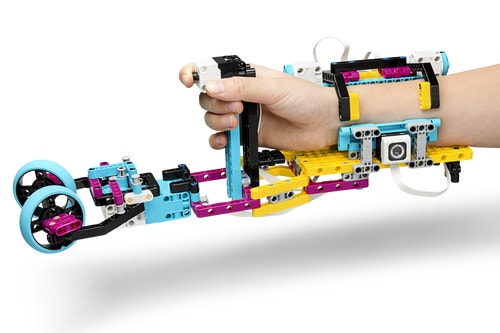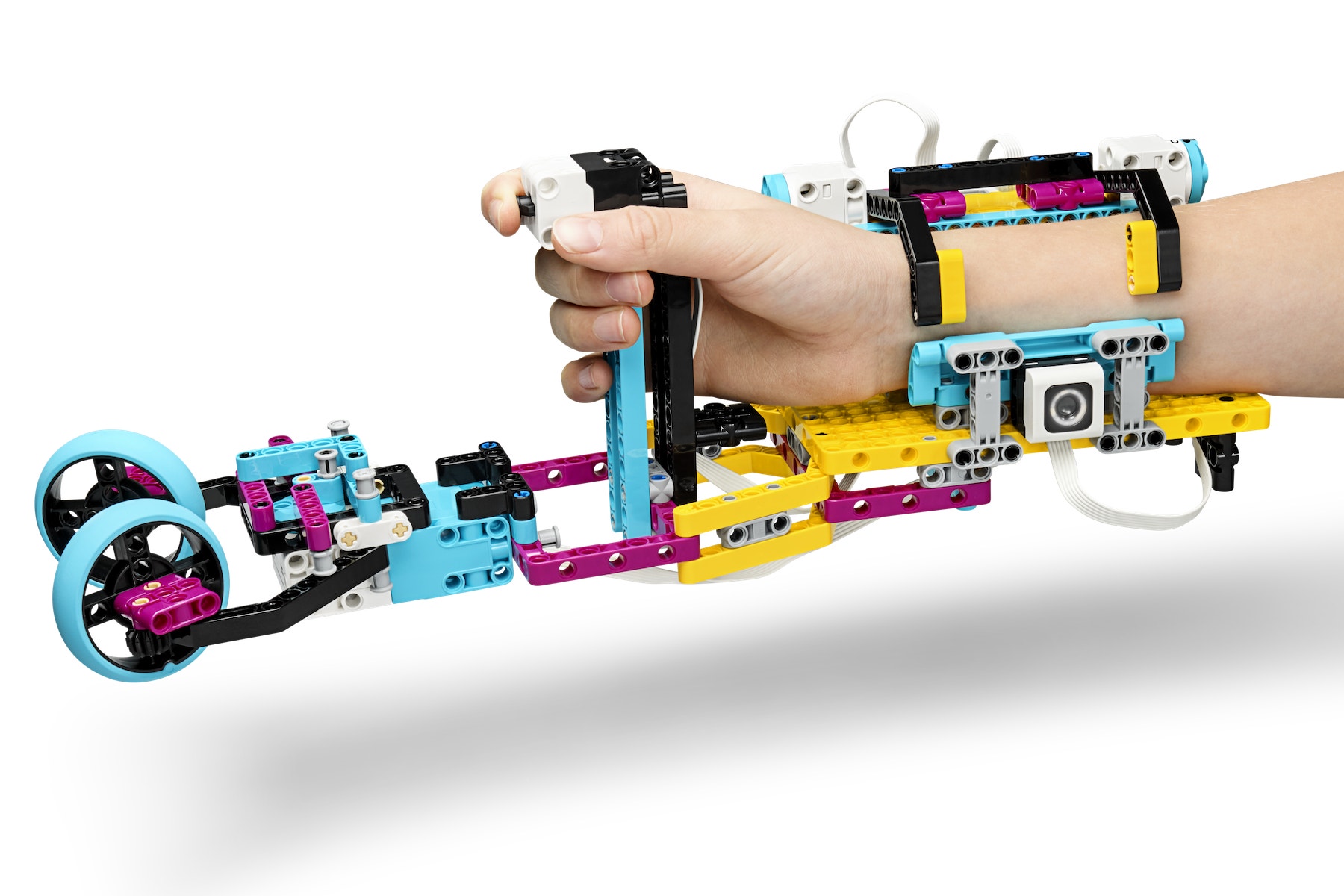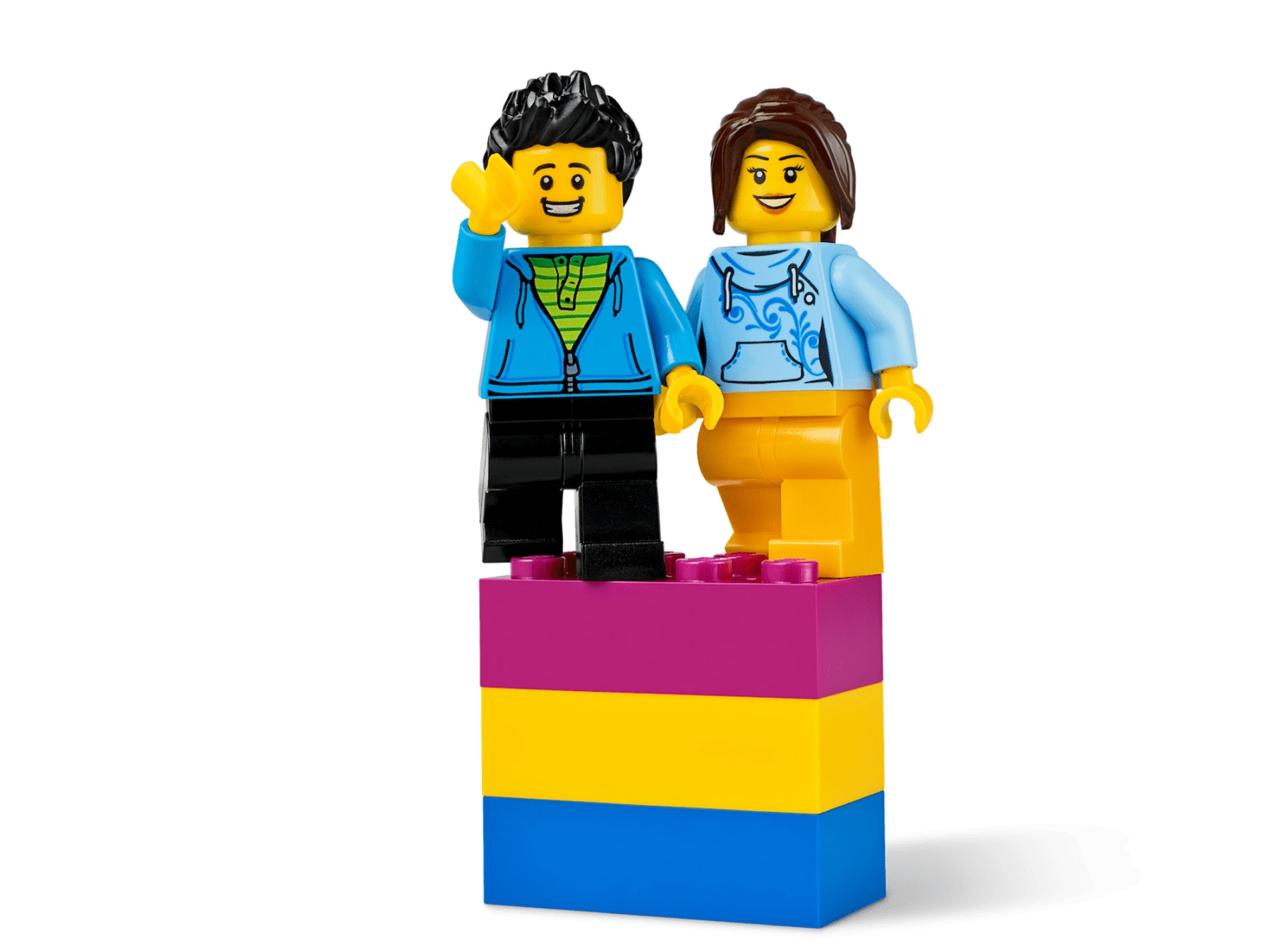Design for Someone
Use the complete design process to solve a real-world problem linked to prostheses.

Lesson plan
1. Prepare
- Read through the student material in the LEGO® Education SPIKE™ App.
- Plan accordingly, this project is designed to be run over multiple sessions.
Part A
2. Engage (15 Min.)
- Use the ideas in the Ignite a Discussion section below to engage your students in a discussion related to this lesson.
- Use the video to explain the lesson.
3. Explore (30 Min.)
- Allow your students time to brainstorm.
- Have them work in pairs to choose 2 ideas they'd like to try.
Part B
4. Explain (45 Min.)
- Have each pair of students build and test their 2 chosen solutions.
- Make sure they can create their own tables to collect data about their testing method.
Part C
5. Elaborate (45 Min.)
- Facilitate a sharing session with each team presenting their results.
6. Evaluate
- Give feedback on each student's performance.
- You can use the assessment rubrics provided to simplify the process.
Ignite a Discussion
Start a discussion about prosthetics and what your students would do if they had to replace someone's hand with a new function.
- Have them think about someone who's missing a limb and what they'd most like to do with a prosthesis.
- Ask them to get crazy and think about reinventing a hand. What would a chef, mechanic, or even a student like them like to have instead of a hand?

David Aguilar Amphoux
Building Tips
Open-Ended Solutions
This project is designed so that every student or team can have a unique solution.
Example Solution
Give all of your students the same starting point by having them build this arm. Ask them to make it their own by designing a specific function such as grabbing fairly big objects.
Here's an idea you can use as a proof of concept.


Coding Tips
Main Program

Differentiation
Simplify this lesson by:
- Using the suggested example solution as the starting point for all students
- Narrowing the task to something very specific such as picking up a piece of fruit or turning a door handle.
Take this lesson to the next level by:
- Inviting a specialist from the prosthesis department at a college, hospital, or university to speak to your class.
- Pairing up with a specialist to try to design a real-life solution for someone.
- Using 3D printed or laser cut parts, if you have those tools available.
Assessment Opportunities
Teacher Observation Checklist
Create a scale that matches your needs, for example:
- Partially accomplished
- Fully accomplished
- Overachieved
Use the following success criteria to evaluate your students' progress:
- Students can identify the key elements of a problem.
- Students are autonomous in developing a working and creative solution.
- Students can clearly communicate their ideas.
Self-Assessment
Have each student choose the brick that they feel best represents their performance.
- Blue: I've successfully created a new hand.
- Yellow: I've successfully created a new hand that has a creative way of performing the desired function.
- Violet: I've successfully created a new hand that has has a creative way of performing the desired function and I've presented my ideas in a way that's clear and easy to understand.
Peer-Assessment
Encourage your students to provide feedback to others by:
- Having one student score the performance of another using the colored brick scale above.
- Asking them to present constructive feedback to each other so that they can improve their group's performance during the next lesson.

Language Arts Extension
To incorporate language arts skills development:
- Have your students use text, images, videos, sketches, etc. to record their design process, creating an invention notebook to document their project.
- Have them present their project to a wider audience (e.g., during a science fair).
Career Links
Students who enjoyed this lesson might be interested in exploring these careers pathways:
- Health Science (Biomedical)
- Health Science (Medical & Health Careers)
- Health Science (Medical Assistant)
- Manufacturing And Engineering (Pre-Engineering)
Teacher Support
Students will:
- Use the design process to create a solution to a real-life problem
NGSS
MS-ETS1-2
Evaluate competing design solutions using a systematic process to determine how well they meet the criteria and constraints of the problem.
Common Core
CCSS.ELA-LITERACY.SL.6.4
Present claims and findings, sequencing ideas logically and using pertinent descriptions, facts, and details to accentuate main ideas or themes; use appropriate eye contact, adequate volume, and clear pronunciation.